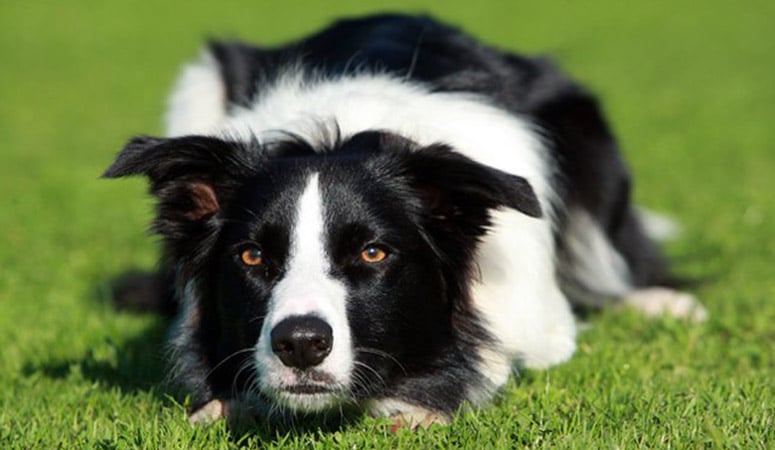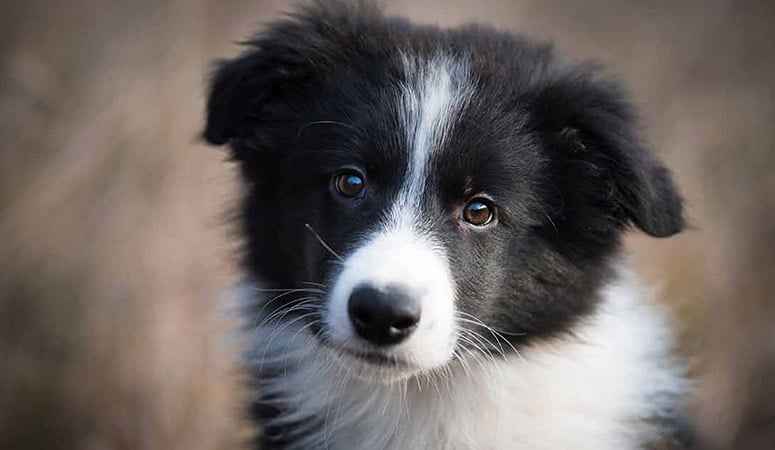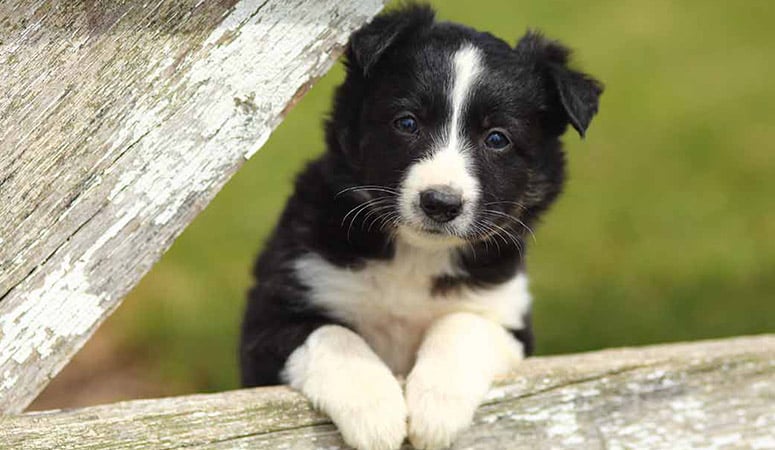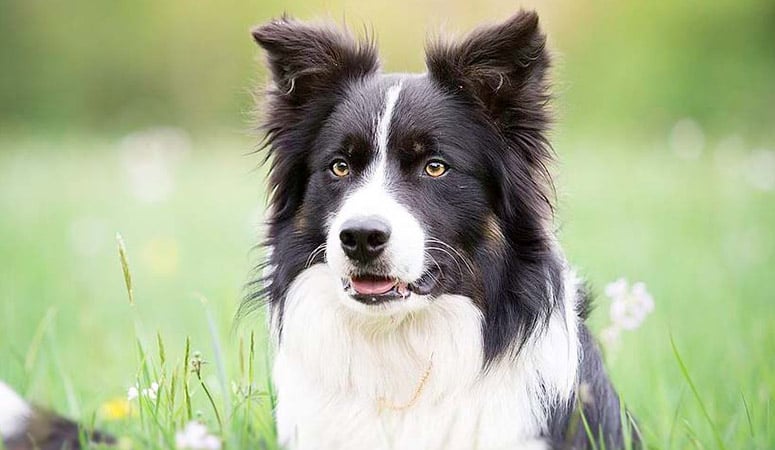Border Collie
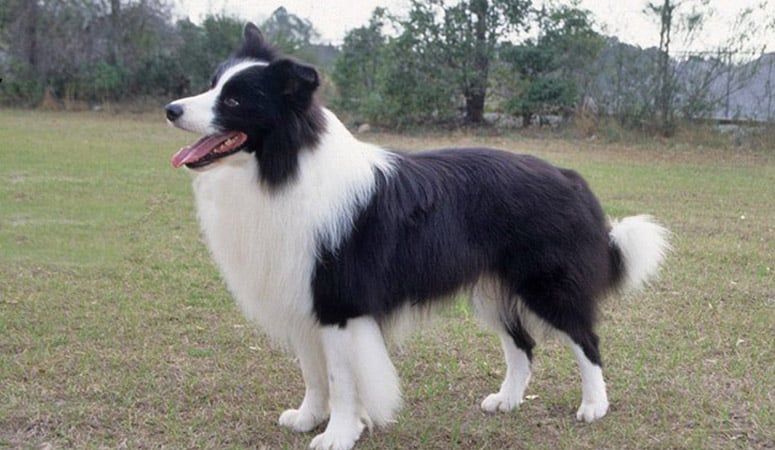
The Border Collie is a working and herding dog breed, with highly intelligence, stamina, boundless energy, which could frequently compete with great success in sheepdog trials and dog sports. They are still used to herd sheep on farms or kept as pets around the world today.
| Other Names | |
| Color | Black, Blue, Brindle, Gray, Red |
| Height | Males: 19-22 inches. Females: 18-21 inches. |
| Weight | Males: 30-45 pounds. Females: 27-42 pounds. |
| Life Span | 12-15 years |
| Personality | Affectionate, Smart, Energetic |
| Exercise | Needs Lots of Activity |
| Origin |
| Popularity | #33 |
| Groom Needs | 2-3 Times a Week |
| Kids Friendly | No |
| Dog Friendly | Yes with supervision |
| Watch Dog | |
| Family Dog | |
| Litter Size | 4-8 |
Border Collie Pictures
Border Collie Video
Introduction
There’s one special trait that seems to come to mind the minute you see a Border Collie and that is ‘smart’. Always on the alert, ready for action, this gorgeous little dog is one ball of energy and vitality. He is super talented and hardworking, impressing you all the way with his intelligence and eagerness to please. In fact, they’re the smartest dog breed in the world according to researcher Stanley Coren. Dog experts say you could call them the ‘intelligent workaholics’. Their instinct to nip and nudge and bark with all their energy can’t be trained out of them and a brisk walk or a game of fetch is not going to be enough for these dogs. It is these traits of endless endurability, and balls of energy that make them superior working dogs, but can, unfortunately, make them unsuitable as pets. Pet owners shouldn’t dampen this dog’s spirit by trying to make him fit in with a laidback lifestyle. Napping and lying around doing nothing is kind of a waste of time for these self-respecting sheepdogs. The color most associated with the border collie is black and white, but he comes in some amazing colors such as tricolor, blue & white, blue merle, slate merle, blue tri, chocolate & white, chocolate tricolor, lilac, sable, red, with rough or smooth coats and anything in-between. He stands around 22 inches high at the shoulders and weighs in at around 45 pounds.
Living with Border Collie
Border Collies don’t need excessive grooming to keep him looking good. Their weather-resistant double coat needs to be brushed once a week to maintain coat oils well distributed and to prevent matting in rough varieties. And they need more frequent brushing during the shedding seasons to minimize their loose hair shed around the house.
Bathe your Border Collie only as needed, you can do this every four months or when he’s really dirty or smells terrible.
Brush their teeth at least two or three times a week to remove tartar buildup and the bacteria that lurk inside it, and daily brushing is better for gum health and fresh breath.
Check their ears once a week for dirt, redness, or a bad odor that can indicate an infection, and wipe them out weekly with a cotton ball dampened with gentle ear cleaner to prevent ear issues.
Check their nails twice a month to make sure they aren’t cracking, though they often wear down their toenails during activity. Regular trimming is recommended.
This athletic dog breed is very energetic and requires daily exercise, not just walking around the block or playing fast in the yard. They couldn’t become good apartment dogs because they need room to run.
Adult dogs require at least 1-2 hours of vigorous exercise, this could be walking or running, playing games, or along with a few training sessions in the yard every day, and you can take your Border Collie to dog sports on the weekends. Border Collies always excel in group activities, not to mention obedience, agility, rally, and tracking games, and sports such as flying disc and flyball.
Border Collies may feel depressed and have behavior problems if they don’t get enough physical and mental work.
Border Collies are energetic dogs, so it is very important for their overall health and well-being to feed them with proper nutrition. They can benefit from a complete and balanced high-quality dry dog food, or a combination of supplements with vegetables and fruit. If your Border Collie is very active, consider a sporting dog food, otherwise, feeding complete and balanced adult dog food.
Generally, adult Border Collies require one and a half to two cups of quality dry dog food each day, divided into two meals, and you need to remember that the amount should vary depending on the size, weight, and age of your dog.
Treats can be an important aid in training, but giving too many can cause obesity. There should be clean and fresh water at all times.
The Border Collie is generally a very hardy and healthy breed, but they still need to be screened breeding stock for health conditions. And check their ears regularly for signs of infection, and brush their teeth regularly.
Major concerns: CHD
Minor concerns: PRA, PDA, CEA, OCD, lens luxation, deafness, hypothyroidism, seizures
Occasionally seen: cerebellar abiotrophy, compulsive behavior, ceroid lipofuscinosis
Suggested tests:
Hip Evaluation
Ophthalmologist Evaluation
Total Annual Cost: $2889
Cost is estimated for the first year and may vary depending on many factors, such as dog food, health care, leash, collar, licensing, possible fencing, crates, training and obedience classes, dog-walking, grooming, treats, toys, flea, tick, and heart-worm meds, microchips, etc.
Because of the Border Collie’s extreme intelligence, it can be a challenge to train. If a Border Collie doesn’t get a job to do, their high energy and insistence on being busy may lead to undesirable behaviors, such as chasing, nipping and barking. Owners can start training during puppyhood to prevent boredom and the resulting potential behavior problems.
Border Collies are superstars at canine activities such as herding, obedience, and agility, and they are eager to learn and will have simple commands down in no time. Advanced obedience and dog sports training are important for Border Collies that require mental stimulation and a lot of exercise.
In a training process, it is important to know that you’ll have more success with your dog if you keep it positive, Harsh commands or treatment won’t get you the results you’re after. Patience and consistency are the keys to training a Border Collie.
History
Did you know that their name comes from their home region? The name Border Collie was first developed in Scotland, thriving in the regions and borders of England and Scotland. It’s a Scottish word, Collie – it describes sheepdogs. Because they flourished so in the border region, they were nicknamed the Border Collie.
They were bred also to herd sheep which they excel at and they have become famous for using their eyes, staring intensely at the flock to bring them to order.
The earliest recorded sheepdog trials took place in Bala in Wales in 1873. The crowd watched in awe as the Border Collie showed its skills by herding sheep into the pen simply guided by hand signals and whistles from its owner.
Another famous historian, Queen Victoria, loved them; she loved dogs and had many breeds, period. But she became an active Border Collie enthusiast in the 1860s.
A famous Scottish poet, Robert Burns, owned a border collie called Luath. He loved this dog so much that Luath inspired him to write “The Twa Dogs” – there are numerous statues around depicting Robert Burns with Luath right there by his side.
Helpful Information
Breed Club: The Border Collie Society of America (BCSA)
Breed Club Link: www.bordercolliesociety.com
Breed Club Rescue: BCSA Rescue Committee
Breed Club Rescue Link: https://www.bordercolliesociety.com/border-collie-rescue-group-contacts/

